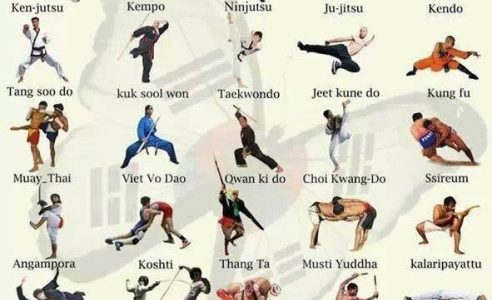Come Discover The Exciting World Of Martial Arts, Where Old Practices Satisfy Contemporary Efficiency - A Trip Into Background And Approach Awaits.
Come Discover The Exciting World Of Martial Arts, Where Old Practices Satisfy Contemporary Efficiency - A Trip Into Background And Approach Awaits.
Blog Article
Short Article Writer-McGrath Martin
Step into the ancient world where martial arts were substantiated of necessity in varied areas. Societies crafted unique battling styles linked with historical contexts. Techniques evolved over centuries through committed technique and social exchanges. Today, modern-day martial arts mix conventional components for optimal performance. Philosophically, martial arts emphasize self-control, self-improvement, and consistency. Regard, humbleness, and balance are foundational principles assisting practitioners towards growth and strength. Check out the midsts of this abundant background and viewpoint to discover the profound impacts forming this long-lasting technique.
Beginnings of Fighting Style
Fighting style originated in various regions around the globe, evolving as functional fight systems to resist risks. These old combating styles were established out of requirement, with each society crafting strategies fit to their one-of-a-kind atmospheres and obstacles. From kempo martial arts grappling arts of Jujutsu in Japan to the striking strategies of Kung Fu in China, martial arts were deeply linked with the historic, social, and cultural material of their respective societies.
In Japan, the samurai course polished martial arts like Kenjutsu, the art of the sword, which later advanced right into the more promoted type of Kendo. On the other hand, in Brazil, Capoeira emerged as a mix of dancing and combat, developed by enslaved Africans as a way to resist fascism. Each martial art carries with it an abundant background and ideology, reflecting the values and ideas of individuals that exercised them.
As what is martial arts for kids look into the origins of martial arts, you discover a tapestry of human resourcefulness, strength, and the unyielding spirit of warriors throughout time.
Advancement of Strategies
With centuries of method and improvement, fight methods within various martial arts have actually undergone a profound development. From old designs like Martial art and Karate to a lot more modern self-controls such as Brazilian Jiu-Jitsu and Krav Maga, the advancement of strategies has actually been driven by a mix of cultural influences, practical applications, and technological improvements.
One substantial facet of this evolution is the cross-pollination of techniques in between various martial arts. For example, techniques from conventional Japanese Jiu-Jitsu were integrated into the creation of Judo by Jigoro Kano in the late 19th century. This blending of styles has caused the development of crossbreed martial arts like Mixed Martial Arts (MMA), which integrate elements of striking, grappling, and submission strategies.
Moreover, the development of strategies has been shaped by the enhancing focus on effectiveness and effectiveness in fight. Professionals have continually sought to improve their strategies with strenuous training, trial and error, and competitors, causing the growth of very specialized and reliable combating styles. Overall, the evolution of techniques in martial arts shows the dynamic nature of battle and the ongoing mission for renovation and development.
Thoughtful Structures
Discovering the underlying philosophical concepts of martial arts gives insight right into their core values and assisting beliefs. At the heart of lots of martial arts techniques is the idea of technique itself. By educating your mind and body to work as one cohesive system, you grow discipline that expands beyond the dojo or fitness center right into day-to-day life. This self-control includes regard, humbleness, and self-discipline, forming not just your physical abilities yet additionally your personality.
Another basic philosophical structure in martial arts is the concept of constant self-improvement. https://www.bbc.co.uk/news/av/uk-england-norfolk-61558409 of mastering a fighting style is never-ending, with professionals continuously striving to far better themselves, both literally and mentally. This focus on development fosters durability, determination, and a development way of thinking that can be applied to all facets of life.
Furthermore, martial arts highlight the value of harmony and equilibrium. Techniques are developed to use a challenger's power versus them, highlighting the principle of generating and redirecting pressure instead of fulfilling it head-on. martial arts store near me extends to interpersonal relationships, promoting tranquil resolutions and mutual understanding. By welcoming these philosophical structures, martial artists not just enhance their fight abilities but additionally grow a way of life centered on individual growth, regard, and consistency.
Final thought
To conclude, the history and ideology of martial arts offer an abundant tapestry of practice, discipline, and self-improvement.
Take for example the story of Bruce Lee, who transformed martial arts by blending various designs and approaches to create his very own unique kind of Jeet Kune Do.
Via dedication and innovation, martial artists remain to push boundaries and motivate others to reach their full possibility both in fight and in life.
